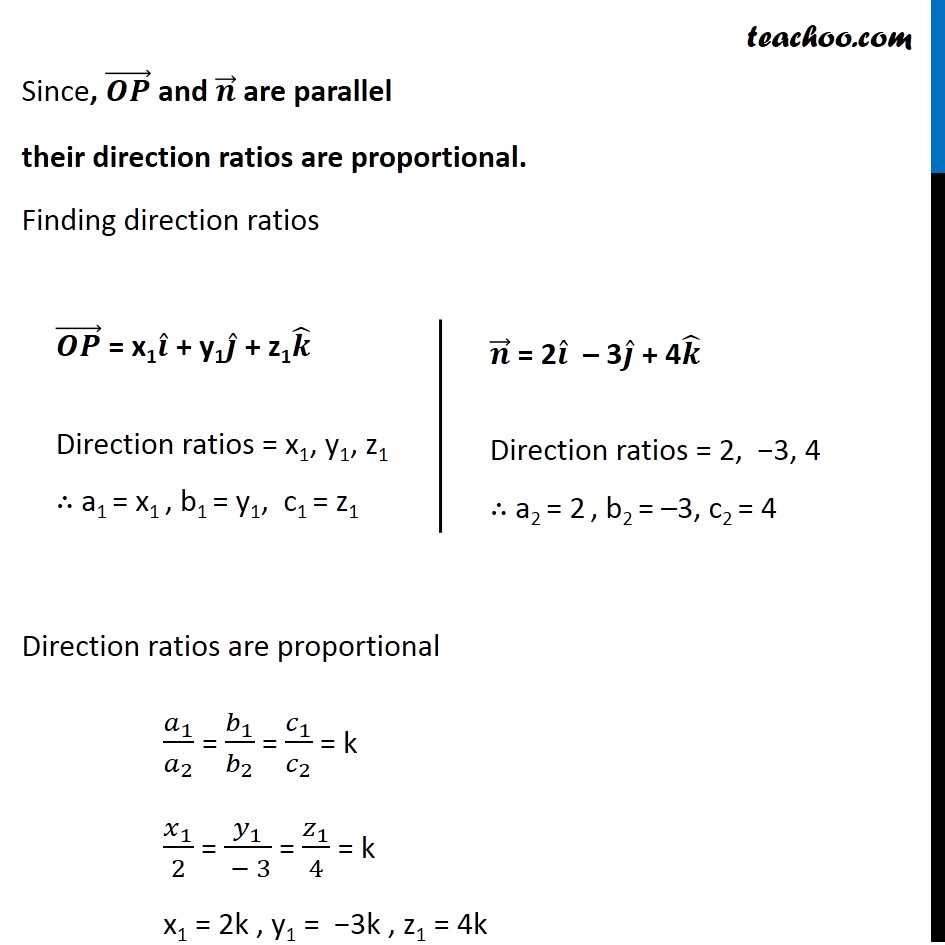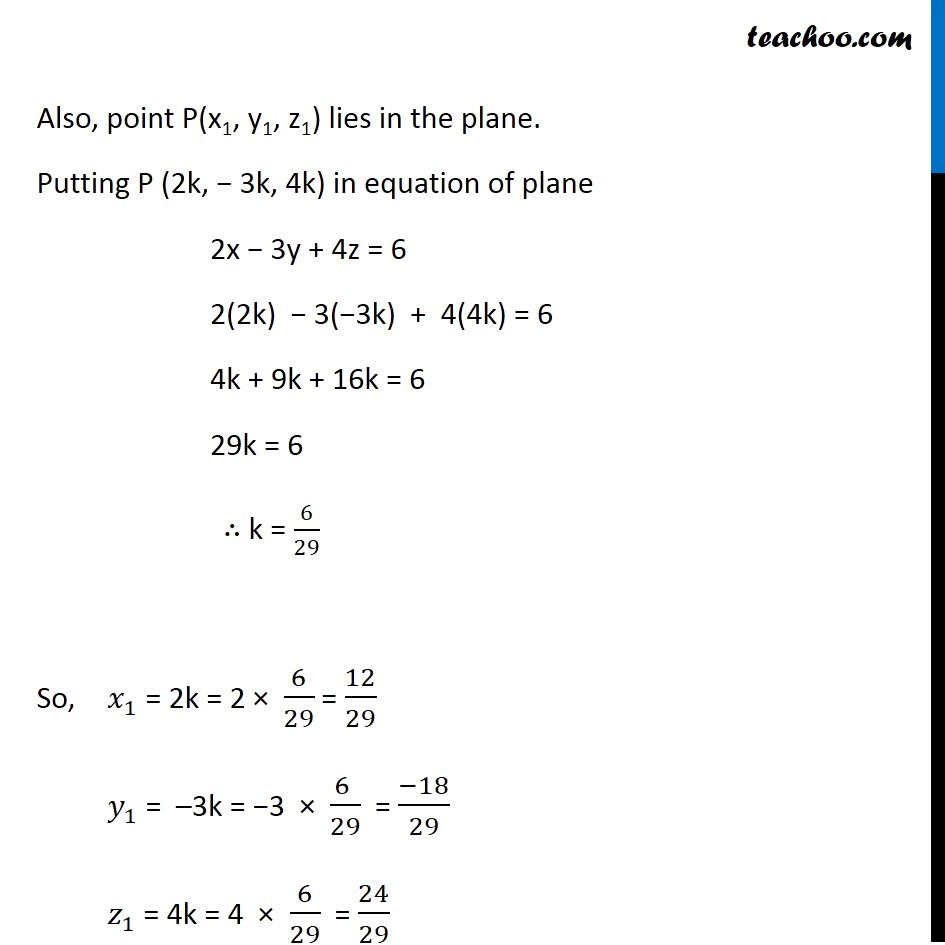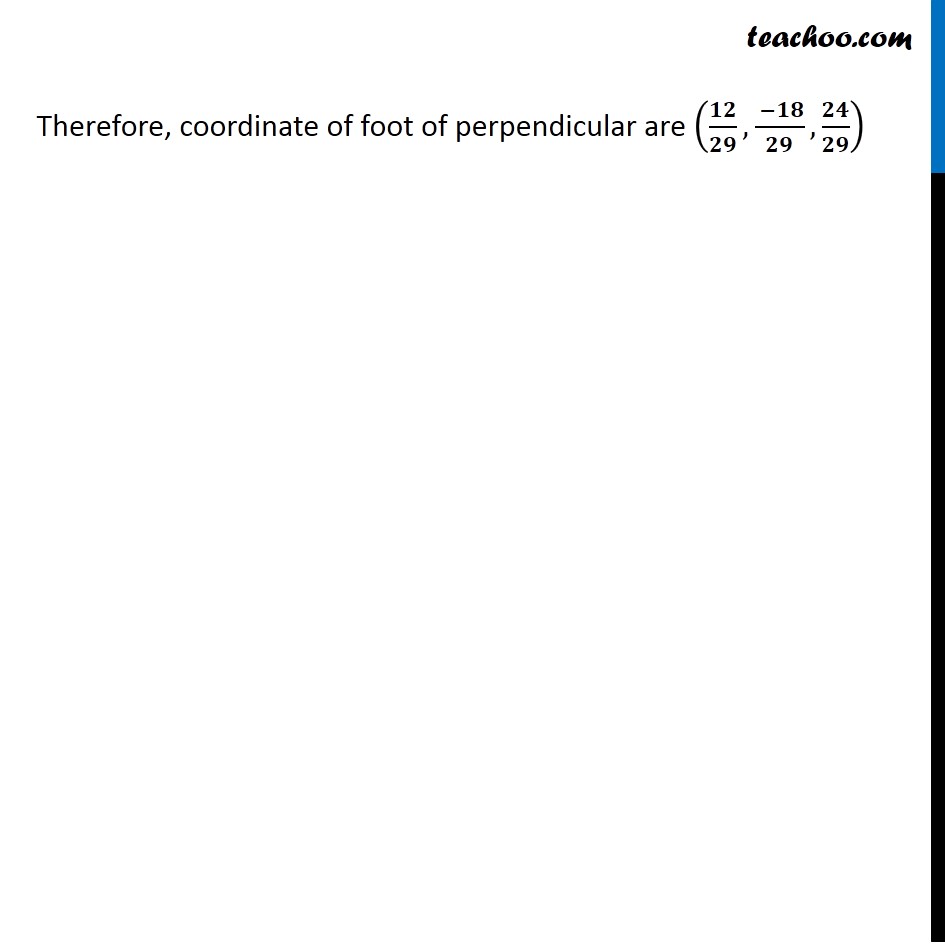



Examples
Last updated at Dec. 16, 2024 by Teachoo




Transcript
Question 6 Find the coordinates of the foot of the perpendicular drawn from the origin to the plane 2x – 3y + 4z – 6 = 0. Let point P(x1, y1, z1) be foot of perpendicular from origin Since perpendicular to plane is parallel to normal vector Vector (𝑶𝑷) ⃗ is parallel to normal vector 𝒏 ⃗ Given equation of the plane is 2x − 3y + 4z − 6 = 0 2x − 3y + 4z = 6 So, Normal vector = 𝒏 ⃗ = 2𝒊 ̂ – 3𝒋 ̂ + 4𝒌 ̂ Since, (𝑶𝑷) ⃗ and 𝒏 ⃗ are parallel their direction ratios are proportional. Finding direction ratios Direction ratios are proportional 𝑎_1/𝑎_2 = 𝑏_1/𝑏_2 = 𝑐_1/𝑐_2 = k 𝑥_1/2 = 𝑦_1/( − 3) = 𝑧_1/4 = k x1 = 2k , y1 = −3k , z1 = 4k (𝑶𝑷) ⃗ = x1𝒊 ̂ + y1𝒋 ̂ + z1𝒌 ̂ Direction ratios = x1, y1, z1 ∴ a1 = x1 , b1 = y1, c1 = z1 𝒏 ⃗ = 2𝒊 ̂ – 3𝒋 ̂ + 4𝒌 ̂ Direction ratios = 2, −3, 4 ∴ a2 = 2 , b2 = –3, c2 = 4 Also, point P(x1, y1, z1) lies in the plane. Putting P (2k, − 3k, 4k) in equation of plane 2x − 3y + 4z = 6 2(2k) − 3(−3k) + 4(4k) = 6 4k + 9k + 16k = 6 29k = 6 ∴ k = 6/29 So, 𝑥_1 = 2k = 2 × 6/29 = 12/29 𝑦_1 = –3k = −3 × (6 )/29 = (−18)/29 𝑧_1 = 4k = 4 × 6/29 = 24/29 Therefore, coordinate of foot of perpendicular are (𝟏𝟐/𝟐𝟗, ( −𝟏𝟖)/𝟐𝟗,𝟐𝟒/𝟐𝟗)